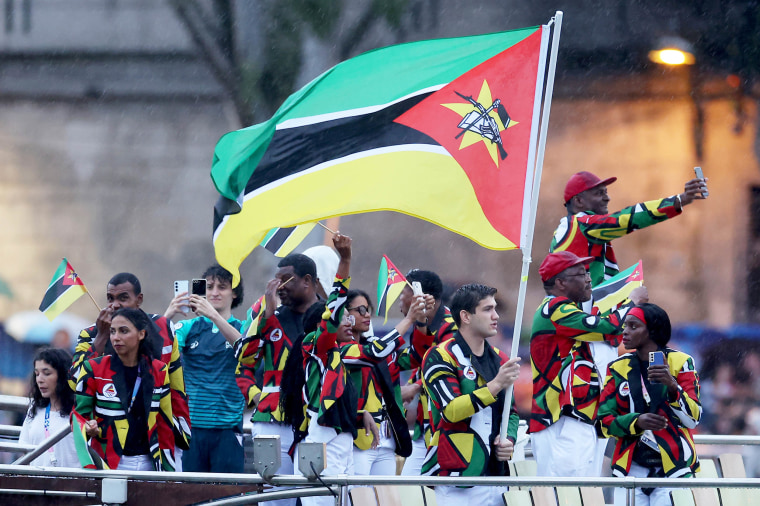Why do so many countries have red, white and blue flags?

[ad_1]
At the Olympic Games, the vibrant display of national flags is always a highlight.
With the flags regularly appearing on scoreboards and celebrating throughout the events, it’s easy to spot their similarities, especially with colors like red, white, blue and yellow.

Ted Kaye, Secretary of the North American Vexillological Association (NAVA), an organization that studies flag designs, notes how these flags symbolize the cooperative spirit of the Olympics.
“It’s always wonderful to see the national flags and the parade of flags in the opening ceremonies,” he explains to TODAY.com. “It can (be) an inspiration to us to see how nations can cooperate, as opposed to compete. They are cooperating to create the games, and then they compete within the games rather than going to war. In fact, the tradition of the ancient Olympics was wars were put on hold while the Olympics were held. And I think the flags are a great symbol of that.”
Kaye spoke to TODAY.com about why certain colors are so common in flags and how they show historical influences and cultural meanings.
Why do a lot of countries’ flags have the colors red, white and blue?

According to Kaye, red, white and blue dominate flags due to dye technology, imitation and symbolic meanings. Historically, these colors were practical because white could be created by bleaching fabric, and red and blue dyes were durable, unlike black, which fades quickly.
Flags often imitate or are influenced by other nations, creating “flag families.” For example, the Netherlands’ red, white and blue flag from the 1500s set a precedent.
“Peter the Great of Russia went to the Netherlands in the late 1600s to learn about shipbuilding and modernizing his navy,” Kaye explains. Peter the Great of Russia, or Peter I, adopted a similar flag, which influenced many countries, including Yugoslavia, Serbia, Croatia and others.
The Dutch flag also influenced regions like the Netherlands Antilles and St. Martin. The British Union Jack’s colors impacted flags in former British colonies, such as the U.S., Australia and Canada, as well as countries historically linked to the U.S., like Cuba, Panama, the Philippines, Puerto Rico and Liberia. France’s use of red, white and blue similarly shaped other flags, demonstrating how one country’s colors can affect many others.
Red, white and blue are also common colors due to their symbolic meanings
Colors on flags typically have meanings attributed to them after a flag has been designed

Red is commonly associated with blood and can symbolize bravery and sacrifice. White is often attributed to peace or purity, while blue signifies truth, tranquility, or sometimes water and sky.
In contrast, green, yellow and black are prevalent in African flags as a reaction against colonial powers

“Green, yellow and black are much more popular in Africa. That may be an anti-colonial reaction to the red, white, and blue of the colonial powers,” Kaye says. “They’re also traditionally black, green and yellow are the colors of the African National Congress in southern Africa.”
“Black, red and green have been the Pan-African colors since the 1920s. Green, yellow and red are also Pan-African colors. You see them a lot in West Africa, and those are based on the Ethiopian flag. Green, red, white and black are the four colors of Islam, so you see those a lot in Northern Africa.”
How many countries in the world have red, white, and blue flags?
According to World Atlas, 29 countries have red, white and blue in their national flag.
What was the first country to have a red, white and blue flag?

According to Kaye, the Netherlands is thought to be the first to use red, white, and blue in a flag.

Originally orange, white, and blue, the Netherlands flag changed to red, white, and blue after the orange faded. Despite this, orange remains the national color for Dutch sports teams.
Peacock is streaming the Paris Olympics around the clock. Learn more about accounts here. TODAY earns a commission on purchases. Peacock is owned by our parent company NBCUniversal.




